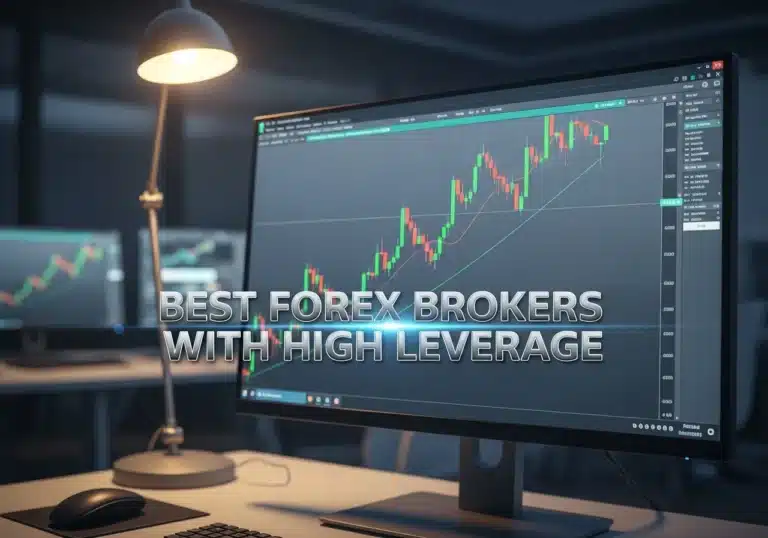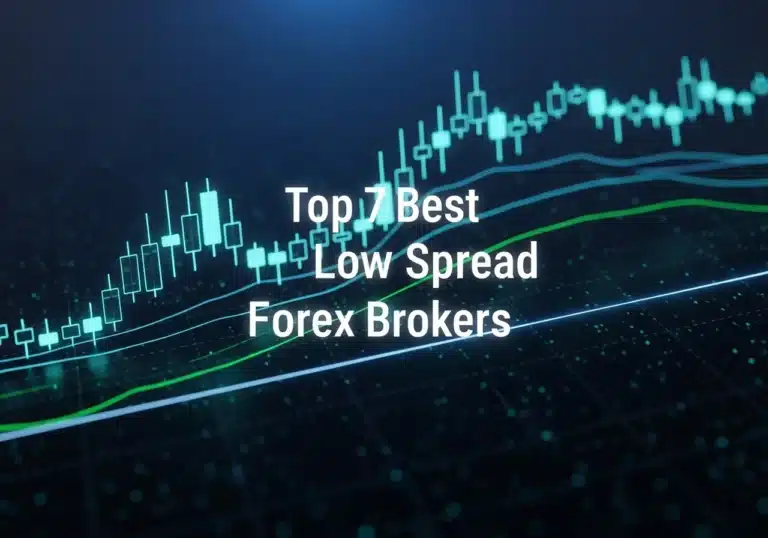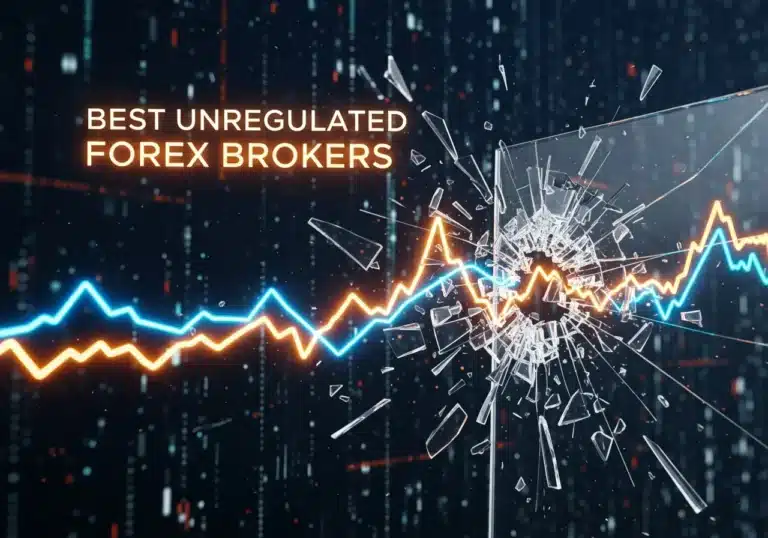High frequency trading in forex is an advanced form of automated trading that employs powerful computers, sophisticated algorithms, and low-latency connections to execute a vast number of orders in fractions of a second. It’s a world where speed is paramount. This guide explores the mechanics, strategies, and profound implications of HFT. We will delve into how these systems work, the dominant strategies they employ, the essential technology required, and the ongoing regulatory conversations shaping its future. For any trader considering this space, finding the right online forex broker is a critical first step.

Key Takeaways
- Speed is Everything: HFT is defined by its ability to execute trades in microseconds, making low-latency infrastructure and co-located servers non-negotiable for success in high frequency trading in forex.
- Algorithm-Driven: All decisions are made by pre-programmed algorithms that analyze market data to identify and act on fleeting opportunities.
- Dominant Strategies: Key HFT strategies include market making (profiting from the bid-ask spread), statistical arbitrage, latency arbitrage, and event-based trading.
- High Barrier to Entry: HFT requires significant capital for advanced technology and a deep pool of expertise in quantitative analysis, programming, and market structure.
- Market Impact: HFT contributes to market liquidity and tighter spreads but also poses systemic risks, such as the potential for “flash crashes.”
Decoding High Frequency Trading in Forex (HFT)

Before diving into the complex machinery of high-frequency trading in forex, it’s crucial to grasp what it is and what it isn’t. At its heart, HFT is a subset of algorithmic trading, but it’s the hyper-specialized, elite special forces of the algorithmic world. While a standard algorithm might execute a trade based on a moving average crossover over several minutes, an HFT system is designed to transact thousands of times within that same period. It operates on a time scale that is imperceptible to humans, exploiting tiny, transient inefficiencies in the market. The entire philosophy of high frequency trading in forex is built on this principle of speed.
The Core Principles of HFT
To truly understand high frequency trading in forex, you must appreciate its foundational pillars. These principles are not just guidelines; they are the absolute requirements for competing in this demanding field.
High Speed & Low Latency
This is the most defining characteristic. Latency refers to the time delay in transmitting data from one point to another. In HFT, success is measured in microseconds (millionths of a second) and even nanoseconds (billionths of a second). Firms spend millions to gain a speed advantage of a few microseconds, as it can be the difference between capturing an opportunity and trading on stale data. From my experience, the race for lower latency in high frequency trading in forex is a perpetual arms race with no finish line.
High Order-to-Trade Ratios
HFT systems send out a massive number of orders to the market, but only a fraction of them are actually executed. Many of these orders are placed to test market depth, gauge liquidity, or are cancelled in a fraction of a second as market conditions shift. This behavior, characterized by a high number of orders placed versus trades filled, is a hallmark of HFT operations.
Short-Term Investment Horizons
HFT firms are not long-term investors. They rarely hold positions for more than a few seconds, and many strategies involve holding a position for just milliseconds. The goal is to accumulate tiny profits from a massive volume of trades throughout the day. By the end of the trading day, a typical HFT firm aims to have a flat position, meaning they hold no open trades, insulating them from overnight market risks. This rapid turnover is fundamental to high frequency trading in forex.
Use of Complex Algorithms
The “brains” of any HFT operation are its algorithms. These are not simple “if-then” statements but complex mathematical models that analyze massive datasets in real-time. They are programmed to detect patterns, price discrepancies, and liquidity pockets, and to execute trades based on this analysis without any human intervention. Crafting these algorithms is a key skill in the world of HFT.
The Engine of High Frequency Trading in Forex

To operate at the speeds required for high frequency trading in forex, a specific and highly advanced technological infrastructure is necessary. It’s a world away from a standard retail trading setup and represents a significant barrier to entry for most. This technological superiority is what separates HFT from other forms of trading.
The Role of Sophisticated Algorithms
An HFT algorithm is a set of precise, pre-programmed instructions that dictates every action the trading system takes. It continuously sifts through market data—like price quotes, trade volumes, and news feeds—to identify trading signals. For example, an arbitrage algorithm might simultaneously monitor the price of EUR/USD on two different exchanges. The moment it detects a minute price difference, it will instantly buy on the cheaper exchange and sell on the more expensive one, locking in a risk-free profit. The complexity can range from relatively simple execution logic to highly advanced models incorporating machine learning, all central to the practice of high frequency trading in forex.
Co-location and Proximity Hosting
In the quest to minimize latency, physical distance is a critical enemy. Data, even traveling at the speed of light through fiber optic cables, takes time to cover distance. To eliminate this delay, HFT firms pay premium fees to place their trading servers in the same physical data center as a forex market’s or broker’s exchange server. This practice is known as co-location. Being “co-located” can shave precious milliseconds off trade execution times, providing a significant competitive edge essential for effective high frequency trading in forex.
High-Speed Data Feeds
HFT algorithms are only as good as the data they receive. They require direct, high-speed data feeds from exchanges and liquidity providers. These are not the aggregated, slightly delayed price feeds that a typical retail trader might see. HFT firms need the most granular, tick-by-tick data available, delivered in real-time, to allow their algorithms to make the most informed decisions possible. This raw data is the fuel that powers the entire HFT engine.
The FIX Protocol and API Connectivity
The Financial Information eXchange (FIX) protocol is the universal language of electronic trading. It’s a standardized messaging protocol that allows different market participants—traders, brokers, exchanges—to communicate order information. HFT firms use a direct FIX Application Programming Interface (API) connection to route their orders directly to the market, bypassing slower, conventional trading platforms. This direct market access (DMA) is crucial for achieving the ultra-low latency execution that high frequency trading in forex demands.
Dominant Strategies for High Frequency Trading in Forex

The success of high frequency trading in forex hinges on the ingenuity and effectiveness of its strategies. These are not about predicting long-term market direction but about exploiting the market’s structure and momentary inefficiencies. Developing a profitable strategy is the holy grail for any firm engaged in this practice.
Market Making Strategies
This is one of the most common HFT strategies. Market makers provide liquidity to the market by simultaneously placing both a buy (bid) and a sell (ask) order for a currency pair. They profit from the difference between these two prices, known as the bid-ask spread. While the profit on each individual trade is minuscule, by executing millions of these trades a day, the profits can become substantial. HFT market makers use their speed advantage to constantly update their quotes, managing their risk and capturing the spread more efficiently than slower participants.
Statistical Arbitrage
This strategy involves using statistical models to identify temporary price deviations between historically correlated currency pairs. For example, the Australian Dollar (AUD) and the New Zealand Dollar (NZD) are often highly correlated due to the close economic ties between the two countries. If an algorithm detects that this correlation has temporarily broken down—perhaps the AUD has moved up without a corresponding move in the NZD—it might simultaneously sell the AUD and buy the NZD, betting that the historical relationship will soon reassert itself. This is a classic approach in quantitative finance, perfectly suited for high frequency trading in forex.
Latency Arbitrage
This is perhaps the purest form of speed-based trading. Latency arbitrage exploits tiny delays in the dissemination of price data between different brokers or data centers. An HFT firm with a faster connection might see a price update for EUR/USD on Exchange A a few milliseconds before it’s reflected on Exchange B. The algorithm can instantly act on this information, buying on Exchange B before the price has a chance to catch up, and selling on Exchange A for an instant, low-risk profit.
Event-Based Arbitrage & News Trading
Major economic news releases, such as interest rate decisions or non-farm payroll data, can cause significant and immediate market volatility. HFT firms position themselves to trade on the instantaneous reaction to this news. They use natural language processing (NLP) algorithms to scan news wires and social media feeds, interpreting the data and executing trades in the microseconds following a release, long before a human trader could even finish reading the headline.
Momentum Ignition and Predatory Strategies (Controversial)
This area of high frequency trading in forex is more controversial and often draws regulatory scrutiny. Momentum ignition involves algorithms placing a series of orders to create the illusion of strong market interest, hoping to trick other algorithms into following the trend. Once the price has been pushed in the desired direction, the HFT firm reverses its position. Other predatory strategies can include “spoofing” (placing large orders with no intention of executing them to manipulate prices) and “layering,” which are illegal in many jurisdictions.
Read More: Algo Scalping Strategy
Pros and Cons of High Frequency Trading in Forex
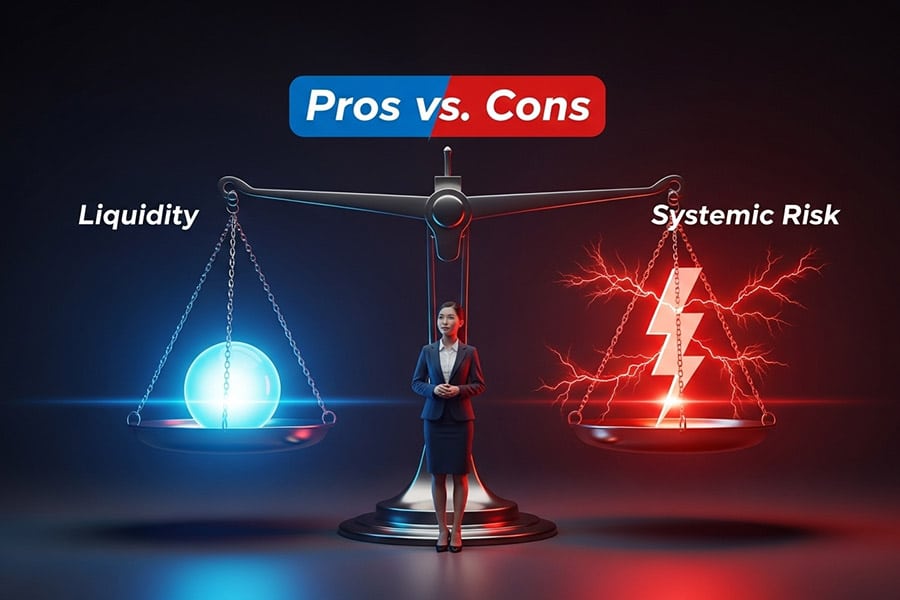
The rise of high frequency trading in forex has been met with both praise and significant criticism. Its impact on the market is complex, presenting a classic case of a double-edged sword with clear benefits and substantial risks.
Key Advantages of High-Frequency Trading
Proponents argue that HFT has, in many ways, been a net positive for market participants. The intense competition among HFT firms has led to tangible benefits.
One of the most cited advantages is increased market liquidity. By constantly placing buy and sell orders, HFT market makers ensure there are always willing participants to trade with, which can make it easier for all traders to enter and exit positions. This competition has also dramatically reduced bid-ask spreads.
In my early days of trading, spreads on major pairs were several pips wide; today, thanks in large part to HFT, they are often just a fraction of a pip. This directly lowers transaction costs for everyone. Furthermore, by rapidly arbitraging away price discrepancies, HFT contributes to enhanced price discovery and efficiency, ensuring that the price of a currency pair is a more accurate reflection of its true value across all venues.
Finally, by removing human decision-making from the execution process, HFT eliminates emotional biases like fear and greed, leading to more disciplined and consistent trading.
Significant Risks and Disadvantages
However, the critics of HFT point to a darker side, raising valid concerns about market stability and fairness.
The most significant fear is the potential for HFT algorithms to cause or exacerbate systemic risk and “flash crashes.” These are events where market prices plummet and rebound in a matter of minutes or even seconds, often triggered by a feedback loop between interacting algorithms.
There’s also a strong argument that the rapid-fire nature of HFT increases market volatility on very short time scales, creating a more chaotic and unpredictable trading environment. Many feel that HFT creates an unfair advantage for large institutions that can afford the multi-million dollar technological infrastructure, tilting the playing field against retail traders and smaller firms. The immense complexity and high barrier to entry make it nearly impossible for the average individual to participate.
Lastly, critics point to the “ghost liquidity” phenomenon, where the vast number of orders placed by HFTs are not genuine interest to trade but are designed to test the market, creating a misleading picture of market depth. This makes high frequency trading in forex a contentious topic.
Read More: create forex trading robot
Choosing a Broker for High Frequency Trading in Forex

For the very small number of traders or firms that can meet the steep requirements for high frequency trading in forex, selecting the right broker and technological environment is paramount. This isn’t about choosing the platform with the best charting tools; it’s about the raw performance of the underlying infrastructure.
Essential Features for an HFT-Friendly Broker
When evaluating a broker for HFT, the focus shifts entirely to performance metrics. You are looking for a partner whose technology can keep pace with your algorithms.
The single most important factor is low latency execution. This means the broker must have servers co-located in major data centers (like Equinix NY4 or LD4) and offer direct market access (DMA). You’ll need FIX API access to connect your trading system directly to their infrastructure, bypassing any retail platforms. Competitive spreads and commissions are also vital, as HFT strategies rely on profiting from razor-thin margins.
Many brokers that cater to HFT will also offer VPS (Virtual Private Server) hosting, allowing you to run your algorithms on a server that is physically closer to their trade servers. Finally, the broker must have a robust and scalable infrastructure that can handle a very high volume of orders and data without any degradation in performance.
Top Recommended HFT Brokers
A few brokers are well-regarded in the institutional and high-volume space. LMAX and Interactive Brokers are often mentioned due to their focus on low-latency execution, direct market access, and robust API solutions. It is crucial to conduct thorough due diligence, as the right brokerage partner is fundamental to the success of any high frequency trading in forex venture.
Building a Setup for High Frequency Trading in Forex

The technical requirements for a competitive HFT system are immense. It’s a field where off-the-shelf solutions rarely suffice and custom-built systems are the norm. This is a far cry from running a trading platform on a personal computer, as the demands of professional high frequency trading in forex are extreme.
Hardware Requirements: Beyond a Standard PC
Standard PCs are not viable for serious high frequency trading in forex. Operations run on powerful, rack-mounted servers with high-end CPUs, large amounts of RAM, and specialized network interface cards (NICs) designed to process data with minimal delay. Every component is selected with the sole purpose of reducing latency, from the processors to the network switches that connect the servers to the exchange.
Software and Programming Languages
The choice of programming language is critical. While languages like Python are excellent for research and strategy modeling due to their extensive libraries, they are often too slow for live HFT execution. The industry standard languages are C++ and, to a lesser extent, Java. C++ is favored for its raw performance and low-level memory control, which allows developers to fine-tune applications for maximum speed. The trading algorithms themselves are complex pieces of software that must be meticulously coded, optimized, and tested for bugs that could lead to catastrophic losses.
The Critical Role of Backtesting
No HFT strategy is ever deployed with live capital without first undergoing rigorous backtesting. This is the process of testing a trading algorithm against historical market data to see how it would have performed in the past. A robust backtesting engine must be able to simulate market conditions with tick-by-tick accuracy, including factors like latency, spreads, and commission costs. It is a critical step to validate a strategy’s potential profitability and identify its weaknesses before it is ever allowed to risk real money. The viability of a high frequency trading in forex strategy lives and dies in the quality of its backtesting.
Read More: Automated Trading Platforms
Regulation and the Future of High Frequency Trading in Forex
The world of high frequency trading in forex does not exist in a vacuum. Regulators globally are constantly debating how to manage its risks while retaining its benefits. The future of HFT will be shaped by this ongoing dialogue and the relentless pace of technological innovation.
Regulations like MiFID II in Europe have introduced stricter rules aimed at curbing some of the more controversial HFT practices. These include tighter controls on order-to-trade ratios and requirements for algorithms to be thoroughly tested. The debate is far from over, and HFT firms must constantly adapt to a changing regulatory landscape. Looking forward, the next frontier is the integration of artificial intelligence and machine learning. HFT algorithms are becoming more sophisticated, capable of learning from market data and adapting their strategies in real-time. This will only intensify the continuous race for speed and intelligence, ensuring that high frequency trading in forex remains at the absolute cutting edge of financial technology.
Opofinance Services
For traders seeking a technologically advanced yet accessible trading environment, Opofinance provides a compelling suite of services. As an ASIC-regulated broker, it offers a secure and trustworthy platform.
- Advanced Trading Platforms: Choose from industry-leading platforms including MT4, MT5, cTrader, and the proprietary OpoTrade.
- Innovative AI Tools: Gain a competitive edge with an AI Market Analyzer, AI Coach, and AI-powered support to enhance your trading decisions.
- Secure & Flexible Transactions: Benefit from safe and convenient deposit and withdrawal methods, including crypto payments, with zero fees charged by Opofinance.
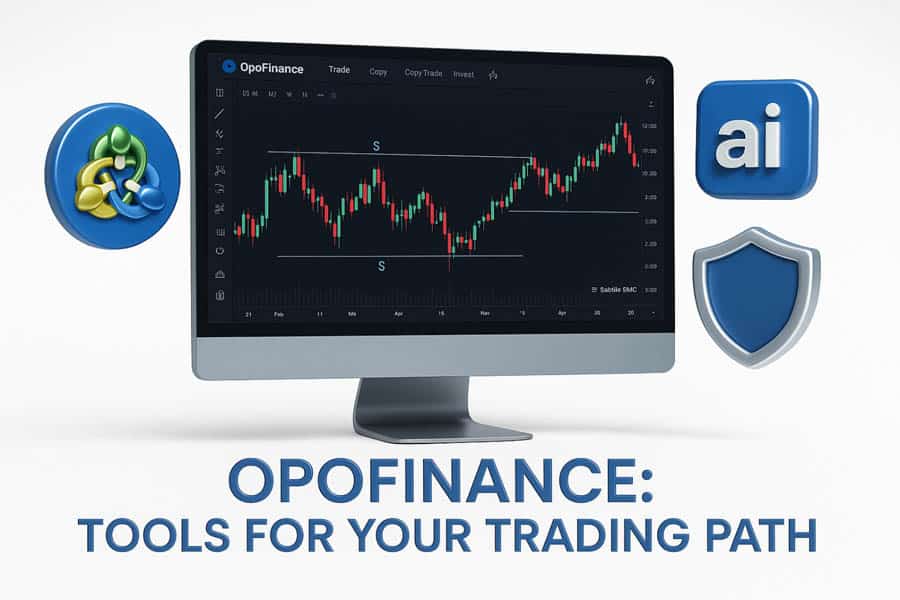
Explore a smarter way to trade. Visit Opofinance today!
Final Verdict: Is High Frequency Trading in Forex Right for You?
In conclusion, high frequency trading in forex represents the absolute pinnacle of technological and quantitative finance. It is a game of microseconds and immense data, where the most sophisticated players compete. The core principles of HFT—extreme speed, complex algorithms, and short-term horizons—define a field that has fundamentally reshaped market dynamics, offering both enhanced liquidity and new systemic risks. This domain is not for the retail trader or the faint of heart. It is reserved for highly capitalized, technologically adept institutions and quantitative firms. As technology continues its relentless march forward, the world of high frequency trading in forex will undoubtedly evolve.
What is the difference between HFT and quantitative trading?
Quantitative trading (“quant”) is a broad term for any trading based on mathematical models. HFT is a specific, high-speed subset of quant trading where the holding period and execution speed are extremely short. All HFT is quant trading, but not all quant trading is HFT.
How do HFT firms manage risk?
HFT firms use automated, pre-programmed risk controls. These include hard limits on position sizes, maximum daily loss thresholds, and “kill switches” that can instantly shut down all trading activity if an algorithm behaves erratically or market conditions become too volatile.
What programming skills are most in-demand for HFT?
Expertise in low-level, high-performance languages like C++ is most prized for building execution systems. Python is widely used for research, data analysis, and strategy development. A deep understanding of data structures, algorithms, and network programming is also essential.
Does HFT contribute to market stability?
This is highly debated. Proponents argue HFT’s market-making activity adds stabilizing liquidity. Critics contend that the correlated behavior of multiple algorithms can remove liquidity all at once during times of stress, contributing to instability and flash crashes.
Can HFT algorithms learn and adapt on their own?
Yes. Modern HFT is increasingly incorporating machine learning and AI. These algorithms can analyze their own performance and vast amounts of market data to identify new patterns and adapt their strategies over time, without direct human intervention.


